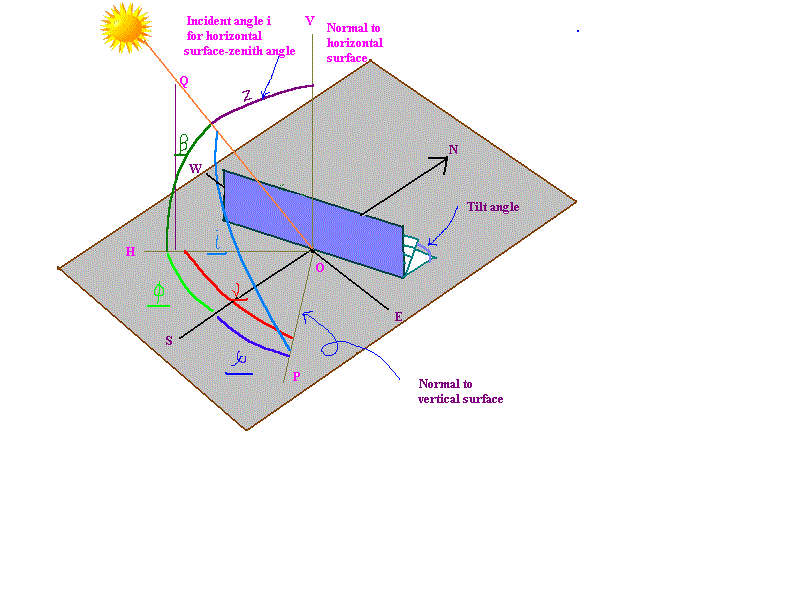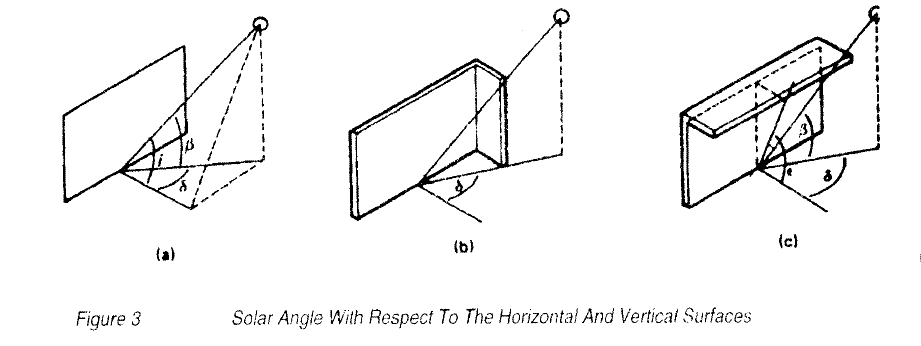Last update:00-04-24

Solar Angle Determination:
The sun's position in the sky with respect to vertical, sloping and horizontal surfaces is
expressed in terms of a number of factors. These factors are defined below and as
shown as Figure 3.

Fig. 3 Solar angles for vertical, sloping and horizontal surfaces
Solar Altitude--
Solar altitude (b) is the angle
QOH (Fig. 3) on a vertical plane between the sun's rays and
the horizontal plane on the earth's surface. (see Example 1)
back to top
Solar Azimuth--
Solar azimuth (f) is the angle SOH
(Fig. 3) on a horizontal plane between the due-south
direction line and the horizontal projection of the sun's rays.
back to top
Surface-solar
Azimuth--
Surface-solar azimuth (g) is the
angle HOP (Fig. 3) on a horizontal plane between the
normal to a vertical surface and the horizontal projection of the sun's rays.
back to top
Surface
Azimuth--
Surface azimuth (y) is the angle
SOP (Fig. 3) on a horizontal plane between the normal
to a vertical surface and the north-south direction line.
back to top
Angle of
Incidence--
Angle of incidence (i)is a angle between the sun's rays
irradiated on a surface and
the line normal to this surface.
back to top
Solar Declination--
Solar declination (d) is the angle between the earth-sun line and
the equatorial plane
(Fig 2). Solar declination will vary throughout the year between
+23.5o and -23.5o.
![]()
Hour Angle--
The hour angle (H) is an expression describing the difference between local solar time
and solar noon. Although it is calculated directly from measurements of time, it is
expressed in angular units, typically degrees. The hour angle can be calculated from
the following equation:
H = [360 (12-T) / 24] degree
where T = solar time
In the morning, the hour angle is positive. At noon the hour angle is zero. In the
afternoon, the hour angle is negative.
You can use the calculator in examples page to calculate the Hour angle.

Other solar angle explanation
![]()